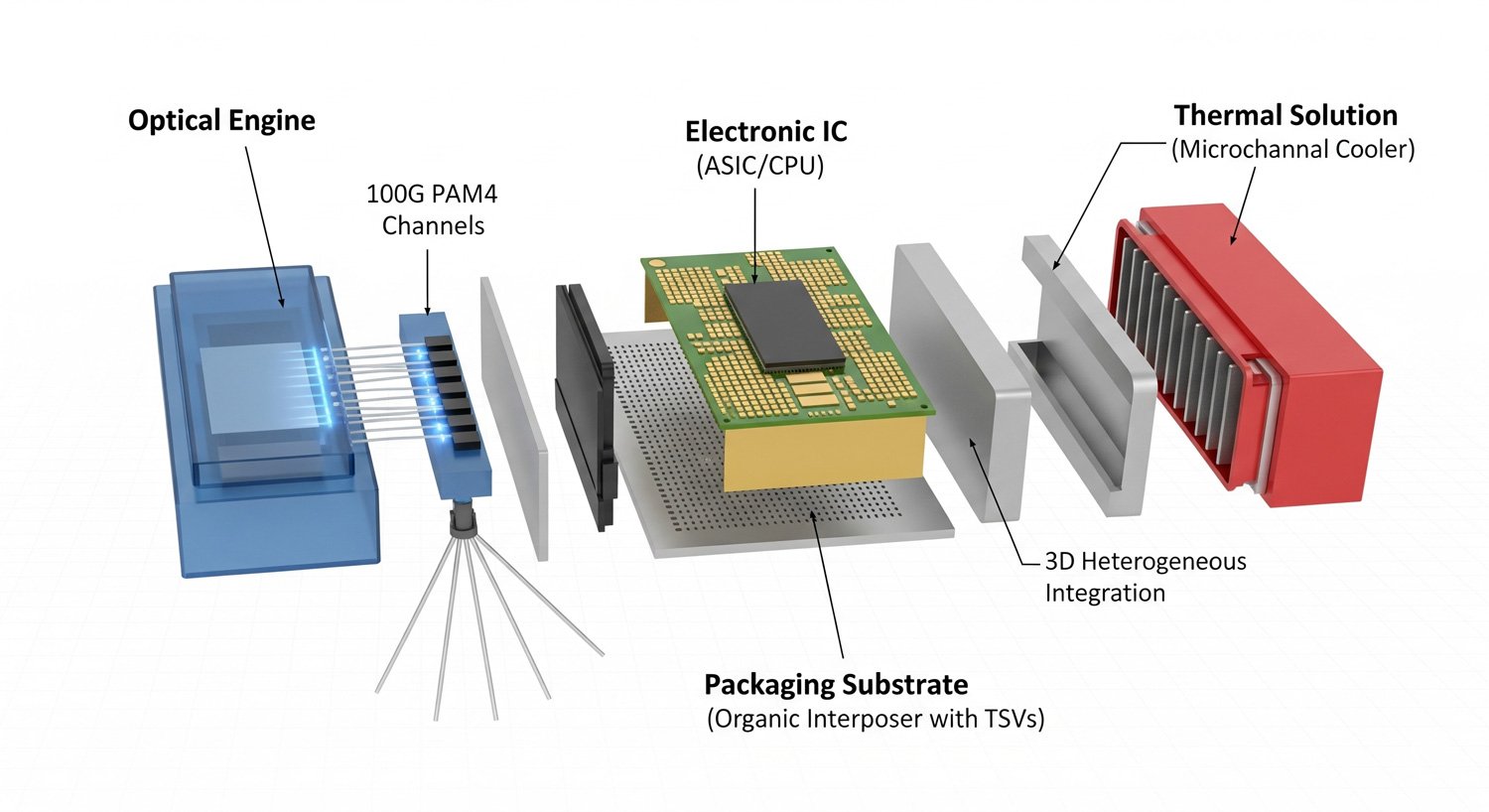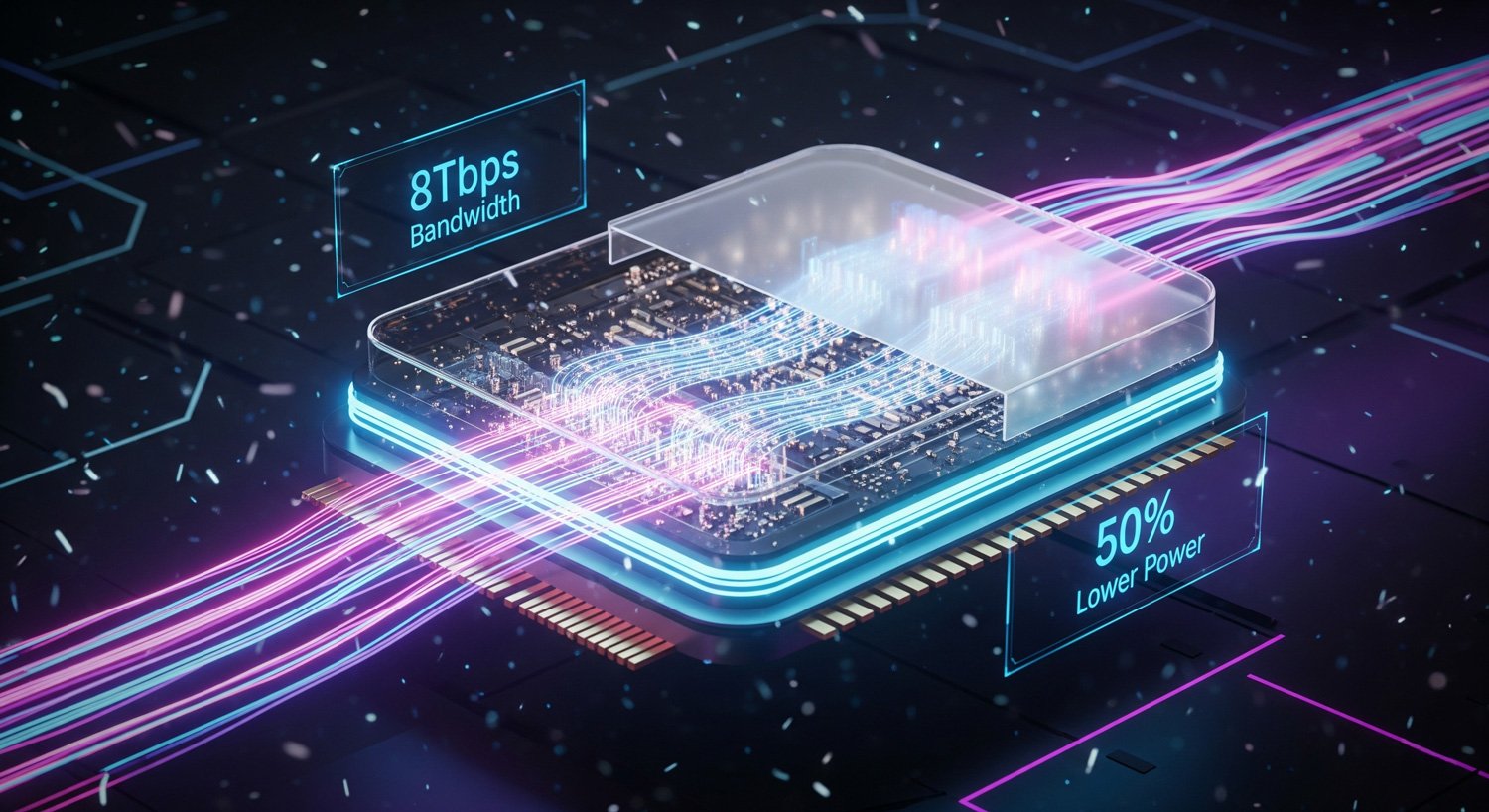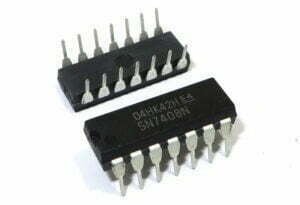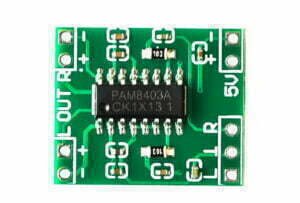Unlocking CPO: The Future of Data Transmission
Co-Packaged Optics (CPO) is sparking a technological revolution in data centers. This application will guide you in understanding this groundbreaking technology that tightly integrates optics with chips, and explore how it addresses the bandwidth, power consumption, and latency challenges brought by AI and high-performance computing.
Technical Interpretation: What is CPO?
CPO, or "Co-Packaged Optics," is an advanced opto-electronic co-packaging technology. It involves co-packaging the optical engine (including lasers, modulators, and other optical components) and a high-performance electrical chip (such as a switch ASIC) on the same substrate. This is in stark contrast to traditional pluggable optical modules, which are separate components connected to the chip via longer copper traces. The core innovation of CPO lies in significantly shortening the electrical signal transmission path from "centimeters" to "millimeters", fundamentally solving the problems of signal loss, high power consumption, and bandwidth bottlenecks inherent in traditional solutions.

Core Comparison: CPO vs. Traditional Pluggable Optics
The emergence of CPO is not a simple upgrade but an inevitable evolution to overcome physical limitations. The table below clearly shows the fundamental differences between the two technologies in key performance indicators. Click the button to toggle detailed view.
Core Advantages & Transformative Applications
By providing breakthrough advantages in bandwidth, energy efficiency, and latency, CPO technology is injecting new vitality into cutting-edge fields such as artificial intelligence, cloud computing, and high-performance computing. These advantages collectively constitute the core value of CPO as the foundation for future data centers.

Ultra-High Bandwidth & Ultra-Low Latency
Transmission speeds are elevated to more than 8 times that of traditional solutions, with signal latency controlled at the nanosecond level. This provides powerful support for scenarios like large-scale AI model training and real-time financial transactions.
Exceptional Energy Efficiency
Power consumption is reduced by over 50% compared to traditional solutions, reaching a level of less than 10 pJ/bit. This significantly lowers data center operating costs and carbon footprint, as stated by NVIDIA's CEO: "Energy is our most important commodity."
Long-Term Cost Optimization
Although initial costs may be higher, significant advantages in long-term Total Cost of Ownership (TCO) are achieved through mass production, compatibility with CMOS processes, and reduced operational and maintenance costs.
Market Landscape: Explosive Growth & Key Players
Driven by the demand for AI and data, the CPO market is witnessing unprecedented growth opportunities. Global tech giants and specialized manufacturers are entering the field, and a vibrant ecosystem is taking shape.
Global CPO Market Revenue Forecast (USD Billion)
Key Industry Players
Future Outlook & Core Challenges
The path to commercializing CPO is not without its hurdles. Significant challenges in technology, manufacturing, and market adoption still exist. Overcoming these obstacles is key to unlocking the full potential of CPO.
Frequently Asked Questions (FAQ)
What is the primary problem CPO technology aims to solve?
+CPO primarily solves the limitations of traditional data center networks, particularly the signal loss, high power consumption, and bandwidth bottlenecks that occur when electrical signals are transmitted over long copper traces between chips and pluggable optical modules. By shortening this path, CPO enhances performance and efficiency.
How does CPO improve energy efficiency?
+The technology reduces power consumption by over 50% compared to traditional solutions by minimizing signal degradation and reducing reliance on high-power SerDes (Serializer/Deserializer) components, which are necessary for compensating for signal loss over longer electrical traces.
Is CPO a mature technology?
+While CPO has made significant progress, it is still in its development phase. The technology is not yet fully mature, and its reliability and manufacturability require further improvements before widespread adoption, with mass production of a 3.2T generation expected around 2027 or later.
What are the biggest challenges for CPO adoption?
+Key challenges include the difficulty of precision alignment for optical fibers (requiring sub-micron accuracy), complex thermal management due to heat generated by the co-packaged chips, and the high cost and complexity of maintenance, as a faulty module may require disassembling the entire switch.
When can we expect CPO to be widely adopted?
+Widespread adoption is tied to overcoming current technical and manufacturing challenges. Based on industry information, large-scale production for the 3.2T generation is anticipated around 2027 or later, indicating a gradual but steady market entry as the technology matures.





